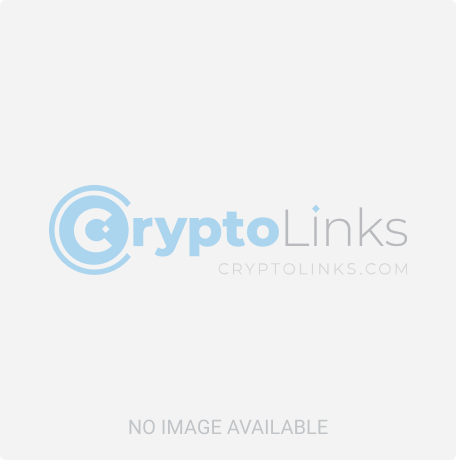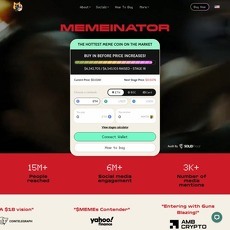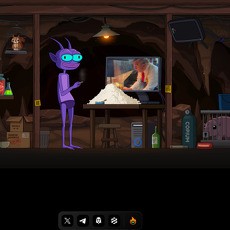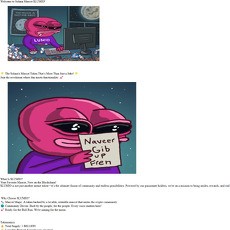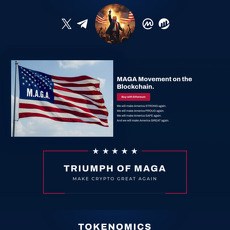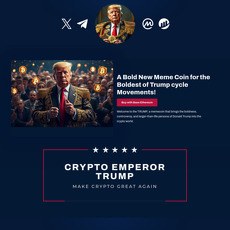Flooring Protocol Review
Flooring Protocol
flooring.io
If your website is on the scam list and you think that you are not a scammer, contact us. After you provide us with all the proof that you are in Crypto World with good intentions, we will delist you. Usually, you get in this category because you are hiding your team, you have a bad reputation(you are tricking, deceiving, scamming people), and you haven't got a written project whitepaper or is a shitty one....
Their Official site text:
Getting Started
This GitBook provides comprehensive technical details on all aspects of the Flooring Protocol platform and ecosystem. It serves as an in-depth reference guide.
For a high-level overview, we recommend first reading the .
Use the left navigation panel to browse specific sections. We hope this guide provides comprehensive insight into the Flooring Protocol platform.
Let's begin to explore Flooring Protocol.
Our Mission
NFTs have cultivated vibrant communities and seen tremendous growth recently. As native blockchain assets, they represent a multifaceted landscape - canvases for artists, personas for influencers, viral experiments, rare collectibles, exotic investments, and more.
While ecosystem has evolved from its infancy, many imbalances still remain. One such imbalance is that Top-tier NFTs can be prohibitively expensive, excluding many while some collections are relatively undervalued despite their immense social impact.
Flooring Protocol aims to address this divide by making NFTs more liquid to increase accessibility. Our mission is establishing balance by lowering barriers to entry.
We believe NFTs should be the premier speculative assets available to all. By fragmenting and democratizing access, we maximize intrinsic value. Our goal is positioning NFTs as the most vibrant and inclusive asset class.
Goals and Solutions
In the future, Flooring Protocol aims to list fractional μTokens representing prominent NFT collections on top centralized crypto exchanges such as Binance
For example, users could directly buy and sell μAzuki, μBAYC, μPudgy and other fractional tokens on these exchanges.
This integration with trusted mainstream platforms would enable easy onboarding into premier NFT projects in just a few clicks. New users could gain exposure simply by purchasing μTokens on familiar and secure centralized exchange sites they already understand and use.
By bridging fractional NFT ownership to popular centralized venues, Flooring Protocol can bypass many of the friction points that currently impede newcomers. Trading along-side conventional crypto assets streamlines entering the NFT ecosystem for millions globally, then truly capturing the value of social impact NFTs have on the space.
We also aim to develop novel mechanisms for teams to share in their NFT projects' success using μTokens. Additionally, providing compelling incentives for liquidity providers facing risks is a goal, achieved by integrating with Uniswap V3 to direct fees to them on top of our comprehensive Program.
Ultimately, Flooring Protocol envisions a future enabling anyone to partake in the upside of cultural NFT shifts. Open ecosystems lead to exponential creativity. Democratization is just the beginning.
NFT Fragmentation
Flooring Protocol provides two methods to fragment NFTs into 1 million μTokens - the Vault and Safeboxes.
The Vault is a straightforward public option. By depositing NFTs into the Vault, users relinquish ownership but gain immediate liquidity through freely tradable μTokens. The Vault method is convenient and accessible.
For those wishing to maintain ownership, Flooring Protocol offers Safeboxes. This exclusive method requires staking $FLC tokens first. Users can then deposit NFTs into a personal Safebox, receiving a unique Safebox Key verifying ownership in addition to 1 million μTokens.
Safeboxes separates your NFT Premium and Floor Price.
The key differences are:
Ownership: Vault requires relinquishing it, Safeboxes use Keys to retain it
Accessibility: Vault is public and redeemable by all, Safeboxes have staking prerequisites and can only be unlocked by Keys corresponding to Specific NFTs
Privileges: Safebox Keys are bestowed with special rights like redeeming specific NFTs from Safeboxes
Tradability: Safebox Keys can be traded through auctions and other various tools coming in the near future.
In essence, the Vault provides easy liquidity by fractionalizing NFTs publicly, while Safeboxes fragment them privately to uphold ownership privileges. Both serve important purposes for different needs and strategies.
NFT Value by DeepNFTValue
Instant Valuation for your NFTs.
Flooring Protocol is excited to leverage DeepNFTValue to provide users with estimated valuations of their NFTs before fragmenting them into μTokens.
The Importance of Accurate NFT Pricing
Determining the true current market value of an NFT is complex. Prices fluctuate rapidly and different NFTs within a collection carry varying premiums based on traits, history, and other factors.
Having an accurate valuation helps users make informed decisions when picking between our Vault and Safebox fragmentation methods.
For near-floor NFTs, the Vault provides easy liquidity by relinquishing unique ownership.
For NFTs with significant premiums, Safeboxes allow maintaining ownership rights.
Reliable valuations assist users in selecting the ideal fragmentation method for their specific NFTs.
Leveraging DeepNFTValue's Pricing Oracle
has developed advanced machine learning models trained on historical sales data, listings, traits, and other sources to generate real-time price estimates for NFT collections.
We provide the ability for users to get DeepNFTValue oracle estimates for their NFTs before depositing into Flooring Protocol.
These valuations help determine whether an NFT warrants the added ownership benefits of Safeboxes or can be conveniently fragmented in the public Vault.
Seamless UX Integration
Retrieving DeepNFTValue estimates is seamlessly integrated into our fragmentation user flow.
Users simply connect their wallet holding the NFT. The NFT's key attributes are used to instantly fetch and display the DeepNFTValue valuation.
Having quick access to trusted pricing estimates makes it easy to decide whether to pick Vaults or Safeboxes based on the NFT's premium.
We're excited to leverage DeepNFTValue's institutional-grade pricing models to empower informed user decisions when fragmenting NFTs on Flooring Protocol
µ-Tokens
Interact with NFTs in a revolutionary new way through μ-Tokens. These ERC-20 tokens represent fractional shares of an NFT from a specific collection.
When an Azuki is deposited into Flooring Protocol, you receive 1,000,000 µ-Tokens corresponding to that specific NFT collection. µAzuki tokens represent 1/1,000,000 of an NFT in Azuki collection.
1,000,000 µAZUKI = Azuki Floor Price.
While you can't redeem NFTs across collections, you can easily swap between collection specific μTokens on .
Trading and Liquidity
With µ-Tokens, the NFT market becomes far more liquid and versatile. These tokens can be bought, sold, and traded like any other cryptocurrency. It is also significantly cheaper to trade with, avoiding the massive buy/sell spreads and platform fees associated with NFTs.
Whether you're interested in cashing in on a portion of your NFT assets or diversifying your NFT collection holdings, µ-Tokens offer the fluidity and adaptability you require.
µ-Tokens at a Glance
Collection-Specific: Each µ-Token is tied to a particular NFT collection. This means that µBAYC tokens are distinct from, say, µAzuki tokens, each representing fractional ownership in their respective collections.
Liquidity Access: Convert your NFT holdings from a specific collection into µ-Tokens to unlock immediate liquidity.
Trading Flexibility: Enjoy the freedom to trade µ-Tokens and capitalize on market trends.
Platform Involvement: Deploy µ-Tokens for a diverse set of activities and opportunities within the Flooring Protocol ecosystem.
By offering a blend of liquidity, targeted investment opportunities, and enhanced platform features, µ-Tokens revolutionize how you can engage with NFTs.
Vault
The Vault is a core component of Flooring Protocol, serving two primary functions:
NFT Fragmentation: The Vault allows users to deposit NFTs and receive fractional μTokens in return. This provides accessible tokenization of NFTs.
Value Maintenance: The Vault stores NFT collateral that provides intrinsic value to μTokens. Its reserves guarantee redemption ability.
Whether you are trading NFTs casually or investing long-term, the Vault improves your capabilities through:
Liquidity from fragmentation
Stability from redemption reserves
Accessibility for traders of all capital sizes
By fragmenting NFTs and maintaining collateral value, the Vault enhances the Flooring Protocol ecosystem for traders and collectors alike.
Maintaining µ-Token Value & Ensuring Redemptions
The Vault is vital for preserving the intrinsic value of μTokens. It does this by storing ample NFT collateral that backs every μToken with a redeemable asset. This guarantees users can exchange their μTokens for Vault NFTs when desired.
Knowing each token is reliably redeemable for real assets instills confidence in the underlying value of μTokens. Their value is not abstract but backed by the tangible contents of the Vault.
By maintaining robust reserves and enabling consistent redemptions, the Vault gives μTokens inherent worth and stability. Users can trust their tokens represent fractional ownership that can be made whole when the time is right.
Accessibility and Exclusivity
The Vault offers a convenient pathway for fragmenting your NFTs and is accessible to all without the need for staking $FLC tokens. However, once an NFT is placed in the Vault, it becomes exclusive to the Flooring Protocol. Only µ-Token holders have the opportunity to redeem these NFTs.
The Vault is not just a storage facility; it's an integral part of the Flooring Protocol system, offering you liquidity, value maintenance, and the choice between ease-of-use and privileged access. Through the Vault, we empower you to engage with NFTs and µ-Tokens on your own terms.
Reserve Ratio
The Reserve Ratio represents the proportion of NFTs readily available for redemption relative to the total number deposited into the protocol. It provides insight into the protocol's capacity to redeem outstanding μ-Tokens.
How Reserve Ratio is Calculated
A higher ratio indicates the vault holds sufficient reserve NFTs to cover μ-Token redemptions.
To maintain a healthy Reserve Ratio, redemption fees and Safebox rental rates are dynamically adjusted based on the current ratio. This deters excessive redemptions and encourages restoring the ratio when it declines. This ratio is the key to stability.
Maintaining μ-Token Value
Arbitrage opportunities are harnessed by market participants to stabilize μ-Token value. For example, if the Price of an NFT becomes cheaper than 1 million μ-Tokens, buyers can profit by depositing that NFT and selling the μ-Tokens and vice versa. This brings the μ-Token price back in line.
Arbitrage ensures μ-Token prices remain aligned with the broader NFT market.
Dynamic Rental Rates and Fees
Safebox rental rates and redemption fees fluctuate based on the current Reserve Ratio. Lower ratios increase rental rates and fees, discouraging redemptions while the protocol restores reserves. This maintains system stability.
Random NFT Redemption
The Random NFT Redemption feature in Flooring Protocol allows users to redeem a non-specific NFT from a particular collection by burning 1,000,000 µ-Tokens. For example, if a user has 1,000,000 µBAYC tokens, they can redeem an NFT from the Bored Ape Yacht Club collection. Upon redemption, these µ-Tokens are permanently burned, and a randomly selected NFT from the BAYC Vault is transferred to the user's wallet.
Element of Randomization
The feature incorporates an element of anticipation by randomizing the NFT that users receive upon redemption. Similar to the experience of minting NFTs, it introduces elements of surprise and excitement into the Flooring Protocol experience.
Random redemption provides users an opportunity to exchange their deposited NFT for a potentially more desirable one from the Vault.
Dynamic Fee Structure
Redemption is generally free of charge. However, when the of the Vault falls below 40%, a dynamic fee in $FLC is applied. The fee increases as the Reserve Ratio decreases, aiming to sustain the system's viability. For specific fee rates, please refer to the .
Diversification in the Vault
The randomized redemption process encourages a diversified pool of NFTs within the Vault. By ensuring that the redeemed NFTs are randomly selected, it prevents the potential for the monopolization of specific, high-demand traits and promotes a more balanced and diversified ecosystem.
Insecure Randomness
The use of blockchain hashes for generating random numbers is often criticized due to the potential for manipulation. This manipulation could come not only from miners but also from sophisticated attackers who could leverage techniques similar to flash loans to avoid paying $FLC redemption fees when the redemption outcome is undesirable. Despite this, we believe the use of block hashes for random number generation in our project is adequate due to the following reasons:
NFT Value near Floor Price: The NFTs stored in the vault are primarily near the floor price of the collection. The variance in the value of redeemable NFTs is relatively small, reducing the incentive for miners and sophisticated attackers to manipulate the outcome.
Gas Fees for Unsuccessful Redemption: Even with flash loan-like tactics, exploiters would still need to pay the gas fees for every unsuccessful redemption attempt. The potential cost in terms of wasted gas fees serves as a deterrent against manipulation.
User Actions to Optimize Redemption: Even without specialized tooling, users are able to repeat the deposit and redemption process in an attempt to secure a desired NFT. A small fee is added to redemption to discourage this behavior, yet it is acceptable within our system as it does limited harm to the overall health of the platform.
Short Window for High-value NFTs: In the rare scenario where a significantly high-value NFT enters the vault, it is likely to be acquired by someone who repeatedly redeems in bulk within a short period. The short time window makes it difficult for both miners and sophisticated attackers to manipulate the outcome effectively.
In conclusion, while the use of block hashes for generating random numbers is not entirely manipulation-proof, the specifics of our platform design and the dynamics of our user behavior make this approach sufficiently secure for our application. We believe that the benefits of simplicity and cost-effectiveness outweigh the potential risks, which are mitigated by the factors mentioned above.
Dynamic Fees
By default, redemption from the Vault is free of charge when the Reserve Ratio is healthy, specifically when it is above 40%. Fees are only introduced to the redemption process when the Reserve Ratio falls below this threshold. may be excluded from such fees.
Purpose and Reasoning
Dynamic Redemption Fees, levied in $FLC tokens, are a feature of the Flooring Protocol designed to regulate redemptions from the Vault and mitigate the risk of its exhaustion. The introduction of these fees serves several key purposes:
Maintaining Stability: The dynamic fees act as a financial deterrent to slow down mass redemptions, particularly when the Reserve Ratio is low. This ensures the protocol remains stable and robust.
Risk Mitigation: The fee structure is crucial for preventing a rapid depletion of the Vault, reducing the risk of its exhaustion.
Incentive for Protocol Maintenance: When the Reserve Ratio drops below a critical level of 10%, the redemption fee becomes substantially higher. This provides a strong financial incentive for the Flooring Protocol team to purchase NFTs from external marketplaces and refill the Vault, thereby stabilizing the system.
Fee Structure
The table below details the Dynamic Redemption Fees based on the Reserve Ratio:
Reserve Ratio
Redemption Fees in $FLC
≥ 40%
0
< 40%
400
< 38%
600
< 36%
800
< 34%
1,200
< 32%
1,600
< 30%
2,400
< 28%
3,200
< 26%
4,800
< 24%
6,400
< 22%
9,600
< 20%
12,800
< 18%
19,200
< 16%
25,600
< 14%
38,400
< 12%
51,200
< 10%
76,800
< 8%
102,400
< 6%
153,600
< 4%
204,800
< 2%
307,200
Auctions
Buy a Key to Get the NFT You Want
When you win an auction, you get the Safebox Key for that NFT.
With the Key, you can redeem the actual NFT by redeeming :
the Key
1M µtokens
So auctions let you buy keys to get specific NFTs - not random ones.
Since 1M µtokens is pegged to floor price, the Key's value represents Premium over floor.
Isolate Exposure to Coveted Traits
Auctioning Safebox Keys allows isolating exposure to specific rare and in-demand traits.
Owners can choose to auction Keys for their NFTs with the most promising attributes poised for appreciation.
As a bidder, you can target Keys tied to traits you believe will become more scarce and valuable over time.
Power Bidding Extends Auctions
If a bid exceeds the previous bid by a significant amount, the auction can extend up to 24 hours. This gives more users globally a chance to evaluate and participate.
Power Bidding enhances accessibility, competitiveness, and price discovery. The highest bidder wins the Safebox Key, granting redemption rights over the auctioned NFT.
Auctions bring transparency and efficiency to obtaining ownership of Flooring Protocol's most elite NFTs.
Flooring Account
A Flooring Account is similar to a personal digital asset portfolio, holding and managing various digital assets in a secure and organized manner.
Account Creation
A Flooring Account is automatically created when a user initially interacts with the Flooring Protocol. Each wallet corresponds to a unique Flooring Account, ensuring individual control and security for every user.
Account Components
A Flooring Account securely houses the following components:
Safebox Keys: These unique identifiers serve as proofs of ownership for individual safeboxes within the Flooring Protocol.
Staked $FLC Tokens: Users can stake their $FLC tokens within their Flooring Account, granting access to exclusive features such as the Safebox and various other VIP benefits.
µ-Tokens: When users deposit their NFTs into the Flooring Protocol, they are awarded µ-Tokens. These tokens are directly deposited into their Flooring Account rather than their wallet.
Flooring Lab Credit
The $FLC token is the native currency that powers the Flooring Protocol ecosystem. It unlocks and fuels customized platform utilities for all users.
Contract Address : 0x102c776DDB30C754dEd4fDcC77A19230A60D4e4f
Enabling Safeboxes
By staking $FLC in their Flooring Account, users can create personalized Safeboxes to reserve NFTs for custom time periods. Higher $FLC stakes allow longer max durations and greater benefits.
Unlocking VIP Perks
Staking $FLC also determines a user's VIP status tier. Higher tiers unlock exclusive perks tailored to strategies from swift cash-outs to long-term stability and collector retention.
Incentivizing Liquidity Providers
The protocol rewards liquidity providers who add to $FLC and μToken exchange pools with $FLC mining rewards proportional to their share of the pool. These incentives robust liquidity vital for ecosystem growth.
Managing the Treasury Reserve
The protocol treasury accumulates a portion of all $FLC expenditures like fees and bids. These reserves help fund ongoing development, provide collateral, and maintain $FLC value stability.
The treasury may also provide Eco-system contributor grants to worthy contributors and projects.
Maintaining Protocol Stability
Random Vault redemptions normally have no fees. But if reserves dip too low, a in $FLC applies. This disincentivizes excessive withdrawals during periods of volatility.
Facilitating Events
$FLC is required to initiate protocol events like auctions and raffles. As the platform's native currency, $FLC also serves as a discounted bidding option during these events.
Auctions: Users can utilize $FLC tokens to place their bids on a wide selection of exclusive NFTs.
[Coming Soon]
[Coming Soon]
In summary, $FLC constructs Flooring Protocol's economic framework by incentivizing beneficial platform interactions. This enables a dynamic, utility-driven marketplace.
Liquidity Provision
$FLC tokens play a crucial role in fostering liquidity and incentivizing active participation within the Flooring Protocol ecosystem:
μToken Liquidity Mining
Users who add μTokens to decentralized exchange liquidity pools earn trading fees and $FLC rewards. This incentive encourages a healthy and liquid trading environment for µ-Tokens and strengthens the stability of the token's value.
$FLC Liquidity Mining
Users who add $FLC tokens and a paired token to a decentralized exchange's liquidity pool foster a robust market for $FLC tokens. For this contribution, they are rewarded with $FLC tokens, promoting a liquid and healthy trading environment for the native utility token of the Flooring Protocol.
Users can benefit from these strong incentives while simultaneously strengthening Flooring Protocol's ecosystem. Robust token liquidity enhances operational effectiveness and the user experience.
UniSwap
Introduction
uses concentrated liquidity and custom price ranges. Liquidity providers (LPs) deposit an equal value of tokens into a pool, supplying liquidity at specific price ranges. This is different from V2 where liquidity is spread evenly across all price ranges.
For $FLC, liquidity pools with it and a paired token like ETH would be created. Liquidity Providers deposit $FLC and ETH in a 50/50 ratio into the pool of their chosen price range.
When users swap between FP tokens and ETH, they pay a 0.3% fee. As an LP, you earn a portion of this fee proportional to your share of the pool. The more liquidity you provide, the higher your fee share.
For liquidity mining, the Flooring Protocol would distribute additional $FLC rewards to Liquidity Providers on top of the swap fees if they stake their LP Tokens on flooring.io. This incentive is to attract LPs to support the $FLC/ETH and μ-Tokens/ETH pools on Uniswap V3.
The $FLC rewards can come from the protocol's treasury, portion of revenues, inflation, etc. The reward rate may be adjusted over time based on needs.
LPs would be able to claim these $FLC mining rewards frequently, on top of their earned swap fees which accumulate in real-time into the pool tokens they hold.
You would have to stake the Uniswap V3 $FLC or μ-Tokens LP Tokens on to be eligible for the $FLC liquidity mining rewards in addition to swap fees.
The more liquidity you provide, and the longer you provide it for, the more mining rewards you can earn. This incentivizes long-term provision of liquidity in the $FLC and μ-Tokens pools on Uniswap V3.
Tokenomics
The Flooring Protocol ecosystem is powered by its native token, $FLC. Below is a detailed overview of the $FLC tokenomics.
Total Supply and Initial Valuation
There is a fixed total supply of 25,000,000,000 $FLC tokens.
Token Allocation
The distribution of $FLC tokens is as follows:
40% to Community Supporters
25% to Reserve Treasury
20% to Core Contributors
5% to Strategic Investors
5% to DEX AMM Liquidity Pools
5% to CEX Market Making
Community Supporters
The portion allocated for Community Supporters represents the commitment of Flooring Protocol to build a user-centric ecosystem. This allocation is further broken down as follows:
50% to µ-Token liquidity providers: Rewarding those who support the µ-Token market liquidity, which is vital for the robustness and stability of the platform.
35% to $FLC token liquidity providers: Incentivizing users to ensure the liquidity of $FLC token, which is important for its market functions.
10% to Advisors, influencers, and early adopters: Recognizing the early supporters who contribute with their experience, influence, and trust.
5% to Promotion events: Engaging the community and attracting more participants into the ecosystem.
Core Contributors
20% of the total supply is reserved for the core contributors, who are the key members contributing to the success of the Flooring Protocol. These tokens are subject to a 3-year vesting period with a 6-month cliff. This structure ensures long-term commitment and aligns the interests of the core team with the health and growth of the protocol.
Reserve Treasury
The Development Treasury holds 25% of the total supply. The tokens in this category will be used for future developments, ensuring the protocol's ability to innovate and adapt to changing market conditions. The allocation is as follows:
40% to Stage 2 development (leverage trading)
40% to Stage 3 development (launch pad)
20% to Eco-system contributor grants: Maintains the health of the ecosystem by providing grants to worthy contributors, encouraging ongoing development and innovation.
Liquidity Pool and Market Making
5% of the total supply will be allocated to the DEX AMM liquidity pool and another 5% to CEX market making. This allocation ensures healthy market liquidity for the $FLC token and smooth transactions for all participants.
Please note that the distribution and usage of the tokens are subject to the mission and strategic planning of the Flooring Protocol. They may be subject to changes in response to the evolving ecosystem.
Transactions
Users maintain full control over their Flooring Accounts, including the ability to deposit $FLC tokens and µ-Tokens, as well as withdraw these assets back into their personal wallets.
To sum up, the Flooring Account serves as a secure and centralized location for managing assets associated with the Flooring Protocol, allowing users to effectively navigate and make the most of the system's various features.
VIP Tiers
At Flooring Protocol, we recognize the diverse needs of our users and have tailored our VIP tiers to suit a range of preferences and investment strategies. Our VIP system is designed to offer increasing benefits and features based on the amount of $FLC staked, allowing users to realize the full Flooring Protocol experience.
VIP1: The Trader
Ideal for individuals looking to swiftly cash out their NFTs via auctionS.
VIP2 - VIP4: The Liquid Investor
These tiers cater to users with short to mid-term liquidity needs, allowing them to access liquidity against their NFTs in Safeboxes for durations spanning weeks to months.
VIP5 - VIP7: The Collector
For the seasoned collectors who prioritize long-term capital efficiency. Shielded from price volatilities, members of these tiers can store their NFTs in Safeboxes for extensive durations, unlocking the liquidity typically tied up by floor prices.
Staking Requirements for VIP Tiers
VIP Tiers
Staked $FLC
Max Safebox Duration
VIP1
30K
3 days
VIP2
100K
15 days
VIP3
300K
60 days
VIP4
1M
180 days
VIP5
3M
360 days
VIP6
10M
540 days
VIP7
30M
720 days
Staked $FLC can be withdrawn anytime. The cost to rent Safeboxes is kept low.
Infinite Safebox Duration for VIP3 and above
VIP Tier
Safebox Discount
∞ Locking Min RR
Redemption Waiver
VIP3
10%
80%
4,000 FLC
VIP4
20%
70%
8,000 FLC
VIP5
30%
60%
16,000 FLC
VIP6
40%
50%
32,000 FLC
VIP7
50%
20%
64,000 FLC
When Reserve Ratio is > 80%, VIP3 and above are able to lock their NFTs indefinitely regardless of RR fluctuation in the future.
Staked $FLC
The number of tokens to be kept in the user account to maintain the VIP level.
Rental Costs
Rental rates are kept low and start from 1000 $FLC per day.
Max Safebox Duration
The maximum period of time that can be booked when renting or extending a Safebox.
Rental Discount
The discount applied to the Safebox rental staking requirement.
Redemption Waiver
The maximum amount of $FLC to reduce when redeeming a random NFT from the vault or claiming an NFT from an expired Safebox.
Flooring Protocol's VIP tier structure ensures that every user finds a level that matches their strategy, whether they're making quick trades, seeking short-term liquidity, or investing for the long haul.
Audit By Halborn
We are thrilled to announce that Flooring Protocol has successfully completed a comprehensive smart contract security audit by Halborn, a top blockchain security auditing firm.
With over 5 years of experience auditing complex DeFi protocols and securing billions in crypto assets, Halborn is renowned for its rigorous audit processes and exceptional technical capabilities. Their extensive audit provides the highest assurance of the security and correctness of our smart contracts.
Over the past several months, Halborn's expert team reviewed our core codebase and architecture, conducted vulnerability scans, manual analyses, and sophisticated penetration tests to identify any flaws.
Halborn found Flooring Protocol's contracts to follow best practices and contain no critical issues and all other risks were considered resolved after careful fixes engineered by our developers.
Audit By OtterSec
We're excited to announce Flooring Protocol has completed a comprehensive smart contract audit by the respected firm OtterSec.
Over several weeks, OtterSec's expert team thoroughly analyzed our core protocol contracts. Given their immense experience securing complex DeFi systems, we believe their deep scrutiny of our code was the obvious choice for our company.
OtterSec identified some subtle issues which we promptly addressed, implementing fixes to further strengthen protections. Completing this top-tier audit demonstrates our steadfast commitment to user security.
Passing OtterSec's rigorous evaluation provides tremendous confidence in Flooring Protocol as we prepare for the mainnet launch.
OtterSec found Flooring Protocol's contracts to follow best practices and contain no critical issues and all other risks were considered resolved after careful fixes engineered by our developers.

